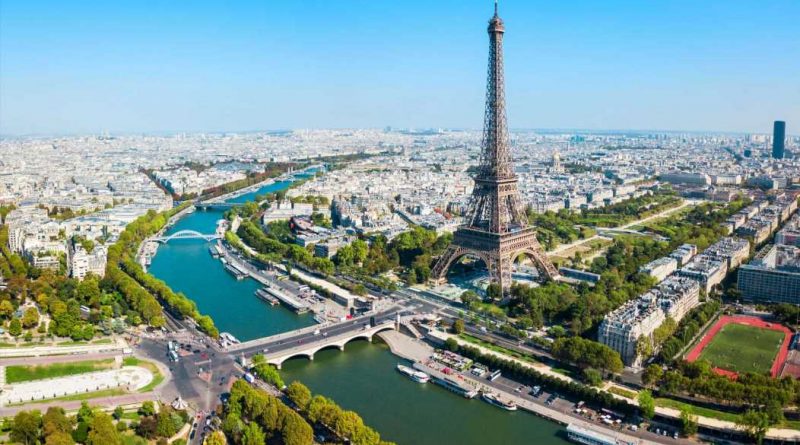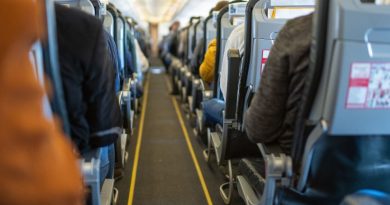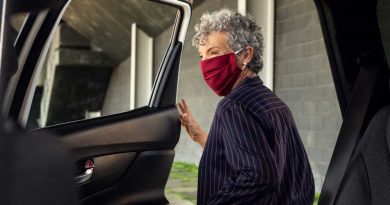A Country-By-Country Guide to Europe’s Summer Reopening
Over the past couple of months, European countries have oscillated between locking down (some, for a third time) and announcing plans to reopen to international travelers—in cases like France’s, simultaneously. But even as countries battle second and third waves of COVID-19, vaccine rollouts continue to expand, making a return to normalcy—and for Americans, safe travel to Europe—visible on the horizon at long last.
As situations throughout Europe continue to evolve—Turkey recently entered its strictest lockdown, while Iceland just reopened for tourism with a three-step testing requirement. But one bit of news seems most promising: Just this week, the European Union released a plan for allowing vaccinated Americans to visit this summer, with suggestions on how all 27 member states could implement vaccine passport requirements (and, crucially, enact an “emergency brake” response for pausing travel, should they need to do so at any point).
While individual countries will have the autonomy to follow these guidelines to the letter, or to rewrite them completely, some countries have already made announcements in support of welcoming summer travelers from the U.S. France says it will open to vaccinated Americans by June 9, and Spain says it will be ready for travelers the same month. Italy’s prime minister recently said that the country will open “soon,” with a health pass to be created in mid-May (a full month before an E.U.-wide pass is set to be ready).
As is the story of the entire pandemic, situations vary greatly from one week to the next, and one country to another. Ireland and Germany remain under various levels of lockdown, with timelines for a return to normalcy months away at the earliest (the latter just announced that its Oktoberfest will be canceled this fall, for the second year in a row). Others like Greece and Turkey are prioritizing tourism dollars, welcoming travelers while hospitals remain overwhelmed, and locals face fines for leaving their homes, respectively.
Whichever destination you have your eye on—whether it’s for that first post-vaccination trip or to reunite with family—the most important thing to do is read up on the destination’s current COVID-19 situation and local travel restrictions, to ensure that any visit you plan is safe, considered, and respectful of those who call the country home. Read on for the current travel restrictions throughout Europe. (And remember to check back for updates.)
This story was last published in October 2020. It has been updated with new information.
Additional reporting by Julia Buckley.
The United Kingdom
On March 8, the U.K. government began lifting restrictions as the first phase in a four-step process to reopening the country. The country entered step two on April 12. Outdoor restaurants are now open, with table service only but no food requirement for the purchase of alcoholic drinks, as are outdoor attractions, including theme parks and drive-in movies and concerts. Small outdoor events are also authorized to take place, and there is no longer a curfew. Step three, which will likely open up indoor spaces and relax the rules on indoor gatherings, is scheduled to take effect May 17 at the earliest.
Though more than half the population has received at least one vaccine dose, travel restrictions remain stringent. Anyone traveling to England must quarantine for 10 days upon arrival, in addition to taking two coronavirus tests after arrival (these must be booked in advance). Americans traveling from the U.S. can currently enter England by adhering to these guidelines, though nationals from a handful of countries including Brazil and South Africa are on a “red list,” and will be denied entry—in addition to travelers of any nationality who have passed through red list countries within the past 10 days. Before departing the U.K., all travelers must complete a passenger locator form, and provide proof of a negative coronavirus test.
Note that there are additional restrictions for travel to Scotland, Wales, and Northern Ireland. Currently, Scotland does not allow nonessential travelers to enter (find out what is considered essential here). Once in Scotland (or, if traveling to Scotland from other parts of the U.K.) individuals can travel freely, though pre-departure testing is encouraged before any travel to Scottish Islands. Wales likewise allows free travel from other parts of the U.K., though does have entry restrictions for travelers who have been in any countries on its “amber list” within the past 10 days. Such travelers will need to arrive with a negative test, complete the passenger locator form, isolate for 10 days, and get tested on day two and eight. Northern Ireland asks anyone traveling from outside the U.K., including British and Irish nationals returning home, to show a negative COVID test, complete the passenger form, and isolate for 10 days upon arrival.
Ireland
Ireland is slowing easing its strict lockdown rules, with a phased rollback that will occur over the next month and a half. Starting May 10, locals will be able to travel outside their own country for the first time in over four months, and up to 50 people will be allowed to attend events like weddings. On May 17, all non-essential shops will reopen, followed by the reopening of hotels and guest houses on June 2. Only after that, on June 7, will pubs and restaurants be able to open for outdoor service. In a recent interview with the Irish Times, leader Leo Varadkar said he hopes that life will be ‘relatively normal’ again by August.
Like the U.K., Ireland never implemented travel restrictions, but the government continues to advise against all non-essential foreign travel. All visitors must fill in a passenger locator form, then quarantine for 14 days on arrival.
France
President Emmanuel Macron has been making headlines over the past month, since announcing his plan to ease France’s current (third) lockdown and open to vaccinated American travelers by June 9.
Starting May 19, the country will reopen museums, movie theaters, and outdoor service at cafes; at that time, the current 7 p.m. curfew will move to 9 p.m. Indoor dining will open the second week of June, and the evening curfew will be completely lifted June 30. The plan to open to foreign travelers on June 9 is based on a forthcoming health pass, which will be both digital and on-paper, and may be the first European vaccine passport to go into use.
Until then, travel restrictions remain. Americans are currently not allowed to enter the country, unless they qualify for an exemption (which includes needing to travel for work, or having a child currently in France). For exempt travelers, a sworn declaration that no COVID-19 symptoms are present is required, as is a negative COVID test taken within 72 hours of departure, a second test taken upon arrival, and a third test taken after 7 days of mandatory self-isolation.
Germany
Germany is currently under various levels of lockdown, as the country battles a third wave of infections, though the gradual lowering of cases is making it possible to begin reopening in some areas. The state of Bavaria will resume some outdoor dining starting May 10, and the local tourism sector will be allowed to operate again come May 21, in time for school holidays (the region announced on May 3, however, that Oktoberfest will be canceled for the second year in a row this October).
Despite regional re-openings, the national government has chosen to keep nightly curfews between 10 p.m. and 5 p.m. in place in areas with high infection rates, a controversial decision that was fought and ultimately upheld in the country’s highest court on May 5 (the law that allows the government to impose these curfews will remain in place until June 30). Next, parliament will vote on exempting vaccinated Germans from most lockdown requirements, including mandatory COVID-19 tests for visits to hairdressers and non-essential stores. If this passes on May 7, the change could go into effect this coming weekend.
Americans are not currently allowed to enter Germany, unless they also hold E.U. citizenship or residency, and there has been no announcement on when this may change. (For such arrivals, completion of a digital entry registration form and negative test upon arrival is required, though quarantine requirements vary by region.)
Spain
Spain is currently at the end of a six-month state of emergency, which will expire on May 9. Under the current decree, there is a nationwide 11 p.m. curfew, restrictions on gatherings, and lockdowns between some regions. When it lifts, local governments may choose to enact curfews and restrictions of their own: the regional government of northern Navarre (which includes the city of Pamplona), for example, says it will extend the curfew and existing six-person limit on social gatherings, according to El Pais, whereas the Catalan regional government says it will continue to restrict gathering size, without extending the curfew.
The country’s borders remain closed to Americans, though the country’s secretary of state for tourism, Fernando Valdés, has said that Spain will be “ready to receive visitors in June,” according to the Guardian. This is dependent on a digital certificate expected to be piloted this month, which will indicate if travelers have been vaccinated, if they have tested negative, or if they have already recovered from COVID, which will be the criteria for entry.
Italy
Italy currently has a range of COVID restrictions in place, which include limitations on movement between regions, nightly curfews in parts of the country (including Puglia and Sicily), and mask requirements, with the entire country categorized into yellow, orange, and red zones that further dictate how businesses can operate. Museums and other cultural institutions are open on the weekends (with reservations required) in yellow zones, for example, which currently includes Tuscany and Venice, and outdoor dining with table service for a maximum of four households is permitted for lunch and dinner. In red zones, however, which currently includes just the Aosta Valley, a full lockdown is in place with residents asked to leave home only for essential reasons.
Travel into Italy is restricted, though this is set to change in the weeks ahead, as prime minister Mario Draghi announced on May 4 that the country will soon open to travelers, with the creation of a health pass to be released by the middle of May—a month before the expected launch of the E.U. pass. The country has since announced that this pass would be available to travelers from outside of the E.U., likely to include Americans, though no further details have been released on how it would work, or who would be eligible, have been released.
Greece
As of April 19, tourism-dependent Greece is now open to international travelers from a number of countries, including those from the U.S., making it one of the first European countries to open its borders. (It plans to open to remaining countries on May 19.) Per the current rules, visitors from countries including the U.S. and the E.U. can now enter with proof of vaccination, or with a negative PCR test taken within 72 hours of arrival, and the completion of a Passenger Location Form that includes information on addresses while in the country and destinations visited prior to arrival in Greece. Note that travelers from the U.S. with stopovers in other countries need to abide by stop-over country requirements, which may be different. Random health checks are taking place at the airport, and compliance is required.
Within the country, bars and restaurants are open for outdoor table service (as of May 3), with social distancing measures in place. Outdoor attractions, including archaeological sites like the Acropolis, have also reopened, and the nightly curfew has been pushed back from 9p.m. to 11p.m. There are current bans on travel between regions of the country, though prime minister Kyriakos Mitsotakis says these will be lifted on May 15.
Croatia
Croatia is not in the Schengen zone, and caused a stir by opening to U.S. residents on July 1 of 2020 if traveling for “pressing” reasons—including tourism. It has remained open ever since, with some entry requirements: U.S. citizens must present proof of either full vaccination, previous infection, or a negative COVID-19 test result from within 48 hours of arrival, or are asked to take a COVID-19 test upon landing and quarantine until receiving a negative result. For travelers with none of the above, there is also an option to self-isolate for 10 days. (Visitors from a number of “low risk” countries can enter with no requirements or restrictions.)
The country is also offering a visa for digital nomads, with stays of up to a year granted (this can later be extended for an additional six months). Within the country, bars and restaurants with outdoor spaces have been open since February, following a three-month closure, though nightclubs and most indoor dining spaces remain closed. Additionally, alcohol is not being sold after 10 p.m., when most events are also required to end.
Iceland
Iceland has officially reopened to travelers, with a handful of entry requirements that vary depending on vaccination status. Unvaccinated visitors must complete a preregistration form before departure, which requires travelers to upload proof of a negative COVID-19 test taken within 72 hours of departure (rapid tests will not be accepted). Unvaccinated and vaccinated travelers alike are required to undergo testing upon arrival, including children and those who have been previously infected—those with a certification of vaccination or prior infection must quarantine until a negative result is received, whereas all others must quarantine for five days, before taking a second test and quarantining until a negative result is received. Travelers who can prove that they have an “adequate isolation/quarantine location” (description here) are exempt from staying in an official quarantine facility.
Currently accepted proof of vaccination includes CDC, WHO, and Yellow Card certificates that show an individual has received Pfizer, Moderna, AstraZeneca, and Johnson & Johnson vaccinations.
Within the country, restrictions are relaxing in tandem with the reopening of the borders. Restaurants (where alcoholic beverages are allowed) can stay open until 9 p.m. daily for table service, and takeout can be served until 11 p.m. Nightclubs and bars have reopened, though booze can only be served to seated guests, with a maximum of 30 people seated in one area. Ski slopes are allowed to operate at 50 percent capacity, and other outdoor and indoor sports events are permitted (with a maximum of 50 participants). Performing arts and cultural events are also allowed to resume.
Portugal
Portugal has just exited a three-month “state of emergency” as of May 1, and has entered the less restrictive “state of calamity,” to be in place until May 16. Restaurants, cafes, museums, and schools are currently open with restrictions (there is a 10:30 p.m. curfew for dining establishments), and outdoor and indoor events have resumed with capacity restrictions. Additionally, groups of 10 can now gather outdoors (“on terraces”), and groups of six can gather indoors. The land border restriction with Spain has also been lifted.
Currently U.S. citizens can only enter the country for essential reasons, and there is no announced date for when this may change. On May 17, however, the country will open to vaccinated travelers from the U.K.—hopefully, a sign that U.S. travelers may be allowed in shortly after that.
Turkey
Turkey’s government is currently welcoming international travelers, who must show a negative PCR test upon arrival, despite a multi-week lockdown that requires most locals to remain at home. In an effort to spur on tourism, visitors are exempt from these lockdown requirements and allowed to move freely, while locals face fines for leaving their homes for nonessential reasons.
In place until May 17 is a daily, nationwide 7 p.m. curfew, and stores have been restricted to selling essential items, with other businesses required to close. Restaurants and cafes are currently offering 24/7 delivery services through the end of Ramadan on May 13, at which time they will be allowed to operate delivery until 1 a.m. Schools have closed, and intercity travel is not allowed without advance authorization.
Other countries
Switzerland continues to ban entry for non-E.U. travelers, including Americans, as does Austria. The Netherlands is open, but warns that travelers are “strongly advised” not to visit unless it is strictly necessary. Norway is closed to non-essential travelers from outside the E.U. until May 24, and Sweden has the same restriction until May 31.
The Czech Republic is currently only allowing U.S. travelers to enter for essential reasons. Belgium, which currently has nightly curfews in place, remains closed to leisure travelers from the U.S. Poland also remains closed to U.S. leisure travelers, with exceptions for individuals who have Polish family members or a Karta Polaka card proving Polish heritage.
Cyprus is currently open to American travelers as of March 1, who must complete a Cyprus Flight Pass questionnaire and declaration form 24 hours prior to departure, in addition to taking a PCR test within 72 hours of departure, and a second test upon arrival (both at the traveler’s expense). Albania is open to U.S. citizens, with health screenings upon entry, whereas Serbia is open to U.S. citizens with proof of a negative COVID-19 PCR test taken within 48 hours.
We’re reporting on how COVID-19 impacts travel on a daily basis. Find our latest coronavirus coverage here, or visit our complete guide to COVID-19 and travel.
Source: Read Full Article



